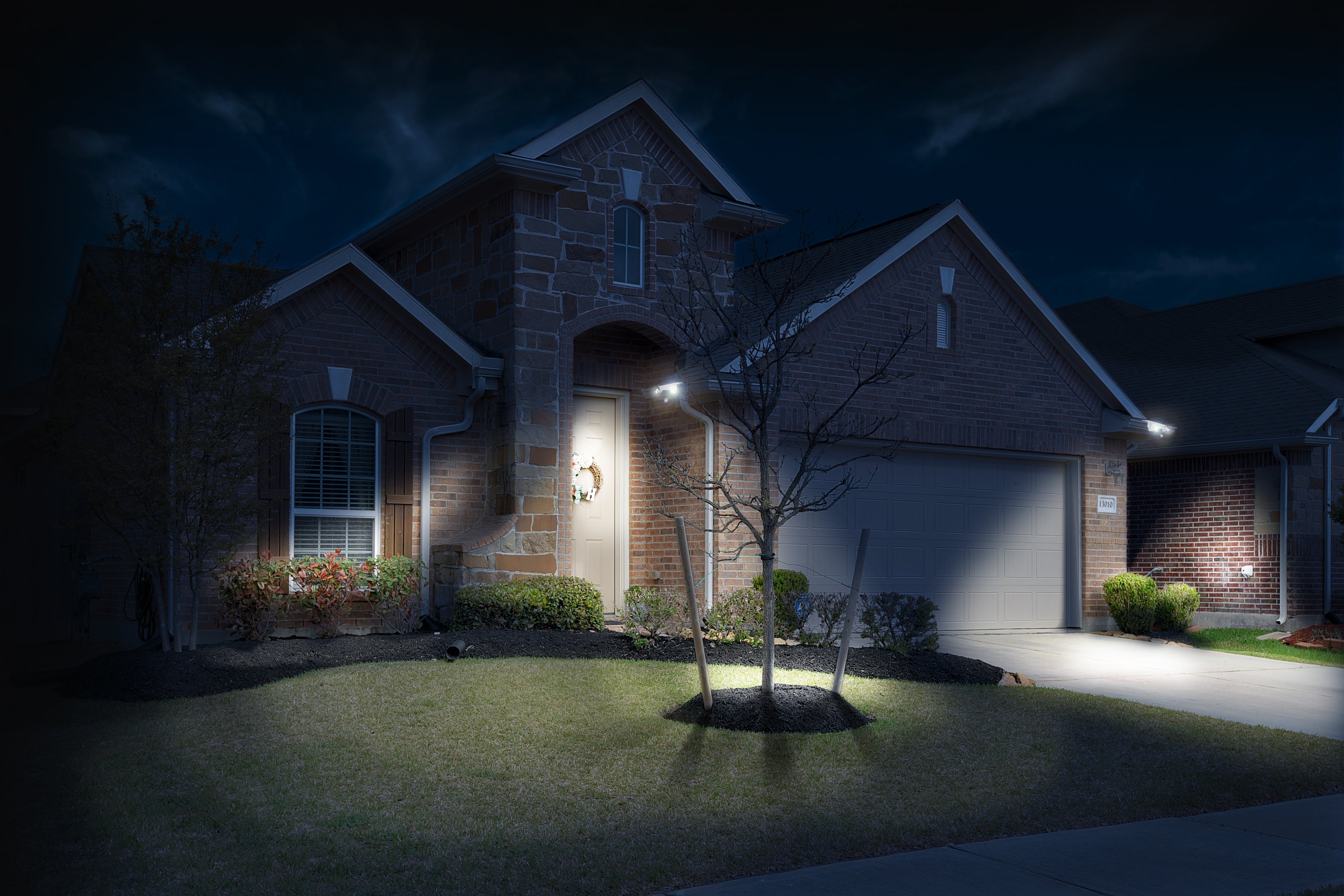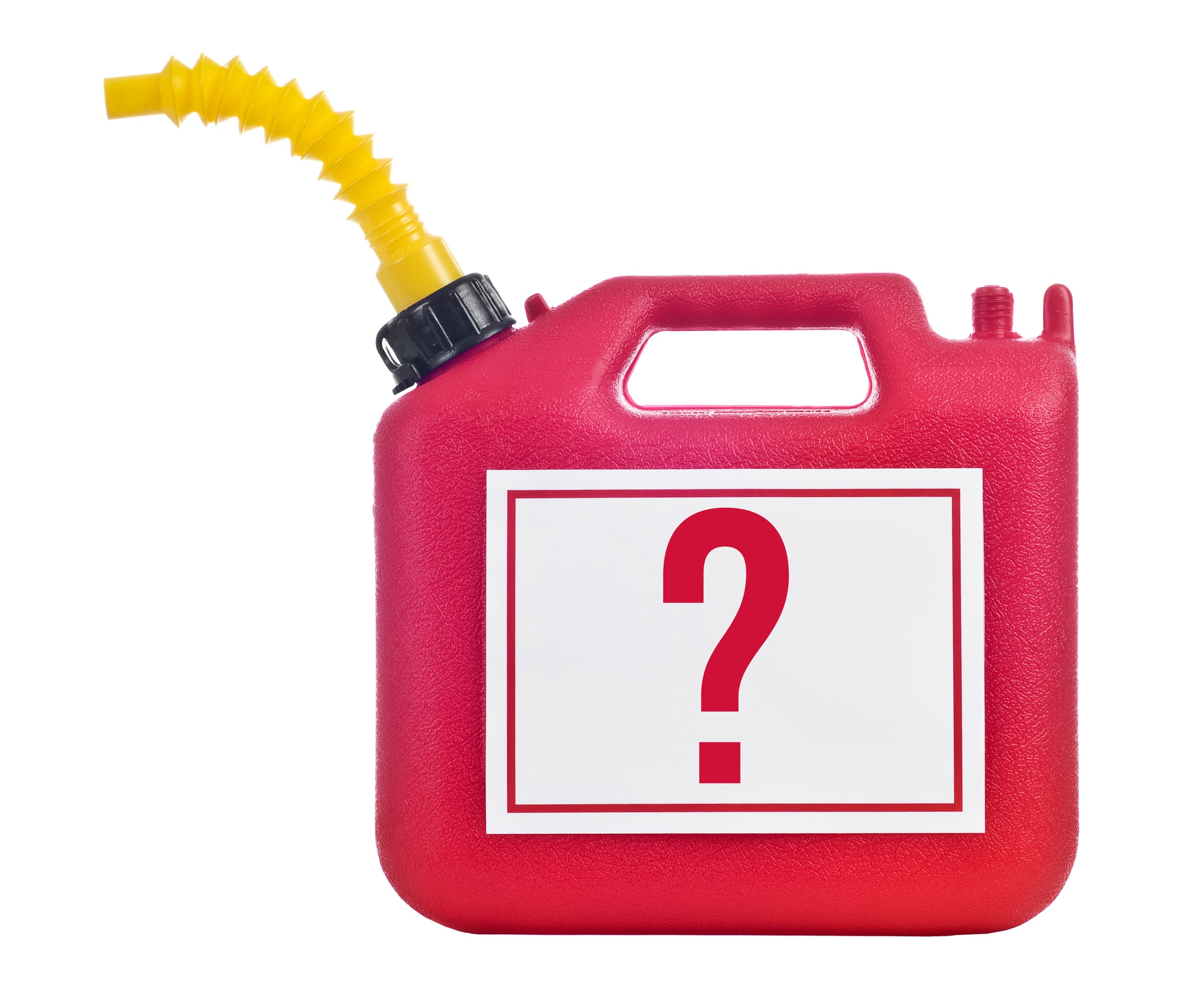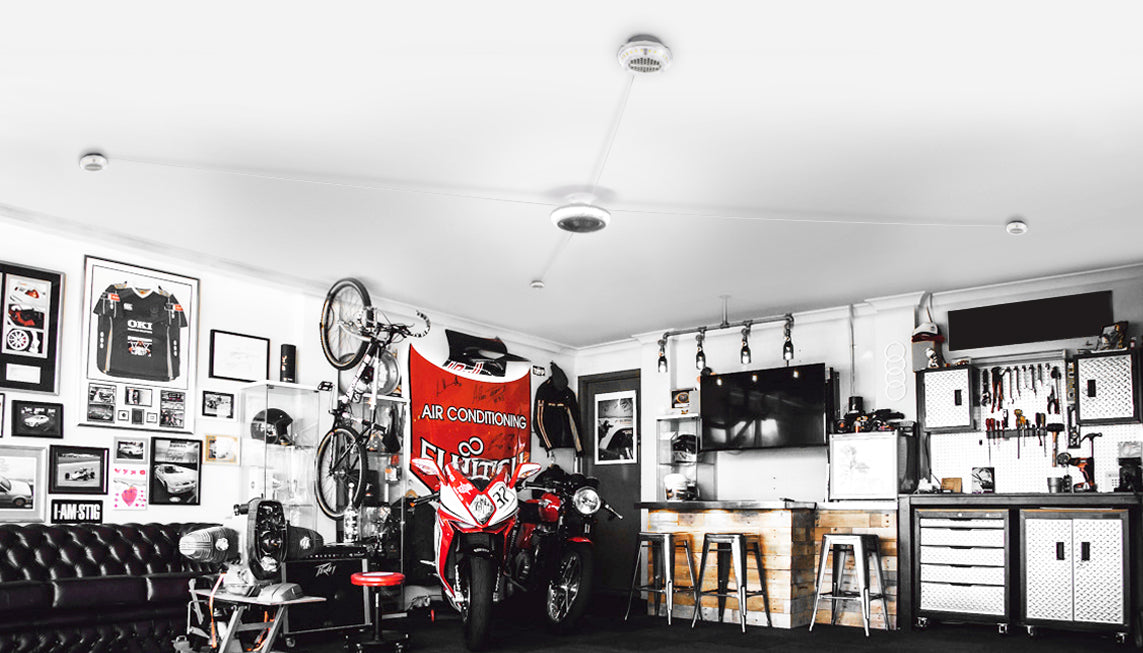
What is the Best Flashlight Battery?
You have a flashlight that you love and that you carry around everywhere. You want to make sure that your flashlight is always ready when you need it because you never know when you might. That’s why it’s important that you get the best flashlight battery. Otherwise, you may be left out in the dark at the most inconvenient time.
Lithium-ion batteries are the best choice for flashlights. This is because they are rechargeable, have a long shelf-life, and can last up to 3350 milliamp hours of charge. These are important factors to consider because you always want to have extra batteries just in case, so having something that is rechargeable and has a long shelf-life gives you peace of mind.
We know how important it is to be able to count on your flashlight. That’s why we want to help you make sure that you get the best flashlight batteries for your favorite flashlights.
What Type of Battery is Best for a Flashlight?
18650 batteries are widely considered to be the best flashlight batteries. These batteries are longer than the standard AA batteries and are larger in diameter. This battery option is very popular these days because it just offers so much power when compared to other options. These batteries typically have 3.6/3.7 volts and will vary in milliamp (mAh) ratings. The different ratings are there to help you determine how often you need to recharge the battery. The higher the rating is, the longer the run time is between charges.
The most popular batteries for flashlights are the 18650. There are plenty of options for these on the market and you can see our lineup right here at STKR Concepts.
Which Battery is Better Li or NIMH?
Each of these types of batteries offers its own set of advantages and disadvantages. This section will break down the advantages and disadvantages of Li (lithium-ion) and NIMH (Nickel-Metal Hydride) to help you determine which option is the best one for you.
NIMH Advantages
- Density of High Energy
You can expect an average of about 2200 mAh, which can be more than the standard lithium-ion batteries.
- Compatibility
You can use the NIMH batteries to power a wide variety of devices, as these come in the same standard sizes of AA or AAA batteries.
- Considered Safe
NIMH batteries are widely considered to be safer than lithium-ion batteries, as these don’t have the same active materials that lithium-ion batteries have. They may pop when overcharged, but lithium-ion batteries can potentially explode.
- Can Be Fully Discharged
You could potentially get the charge down to 0 with these batteries, but you do need to be careful if you do. They can be damaged if they end up with reverse polarity.
NIMH Disadvantages
- Self-Discharge Rate is High
The self-discharge rates start off at 5% within the first week after its charge, but then it can suffer from 50% discharge within the first month. You can get options with lower discharge rates, but these will tend to have lower capacities at around 2000 mAh.
- Not as Reliable for Low-Load Devices
Using NIMH batteries for devices like clocks will not be beneficial to you. They will tend to self-discharge faster due to the lack of load, which is why lithium-ion batteries are better for these items.
- Lower Voltage When Compared to Lithium-Ion Batteries
You will get a lower voltage, with AA batteries only offering about 1.2V versus the 3.7V offered by lithium-ion batteries.
- Takes Longer to Charge
You can expect it to take between 10 and 12 hours to charge a NIMH battery. If you try to fast charge these options, you run the risk of damaging the battery.
- Doesn’t Do Well in Extreme Temperatures
When it comes to extreme temperatures, NIMH batteries see their voltage output drop.
Lithium-Ion Advantages
- More Reliable
When compared to NIMH batteries, lithium-ion batteries have a much lower self-discharge rate. That makes it great for low-load devices and makes them a more reliable choice when used in flashlights.
- Small and Lightweight
Lithium-ion batteries tend to be both smaller and more lightweight than NIMH batteries.
- Higher Voltage When Compared to NIMH Batteries
While you may only get 1.2V with NIMH batteries, you can get around 3.7V with lithium batteries.
Lithium-ion batteries can recharge much faster than NIMH batteries. It can take as little as between 1 and 3 hours to recharge them.
- Does Well in Extreme Temperatures
Lithium-ion batteries can better withstand extreme temperatures than other types of batteries, which is another great reason why you should choose these for your flashlights.
- Density of High Energy
You will get even higher energy density with lithium-ion batteries than you would with NIMH batteries.
Lithium-Ion Disadvantages
- Lacks Compatibility
NIMH are versatile because they can fit standard sizes. This isn’t always the case with lithium-ion batteries.
- Safety Concerns
There are valid safety concerns when it comes to lithium-ion batteries. While they are generally safe, the ions are very active materials that can create hazards.
- Cannot Be Discharged
You aren’t able to fully discharge lithium-ion batteries, otherwise, you can run the risk of damaging the battery. Be sure to keep the battery above 50%.
Can I Use AA Batteries instead of 18650?
Many people think that the 18650 and AA batteries are interchangeable, meaning that you can use either option for whatever your battery needs are. However, you should know that this definitely isn’t the case. These batteries have their own capacities and voltage as well as come in physically different sizes. There are even electronics that aren’t compatible with both options. In this section, you will learn about the differences between these two options.
18650 Batteries
This term is used to describe a lithium-ion battery that is rechargeable. The 18650 refers to the size and dimensions of the battery in millimeters. These battery options that are most commonly used in rechargeable flashlights. While there are different chemistries for the various lithium-ion batteries, the basic principle of them remains the same: lithium ions move from the negative electrode via an electrolyte to the positive electrode while it’s discharging. When recharging, the ions move back. It’s important to know that while all 18650 batteries are lithium-ion, not every lithium-ion battery is an 18650.
These batteries have a cell voltage of between 3.6 and 3.7V, which the voltage average when completely discharged. As it’s being discharged, the range is around 4.2V to 2.5V, but you shouldn’t go below 3V to ensure the longevity and health of your 18650 battery.
You should be aware that lithium-ion batteries do have a self-discharge rate of about 10% every month. But the major benefit of this option is that they are rechargeable. They can be recharged well over 1,000 times without having any memory issues.
AA Batteries
These batteries come in different sizes including AA and AAA. Double ‘A’ batteries can be alkaline batteries, lithium batteries (not lithium-ion), and rechargeable batteries that are nickel-based. These batteries are between 13.5 and 14.5 millimeters in diameter and between 49.2 millimeters and 50.5 millimeters in length, which includes the button-top.
AA batteries contain a cell voltage of 1.5V, where it has a discharge of between 1.5V and 0.9V though they won’t function under 1V. The fact that the standard voltage is 1.5V isn’t an issue as the devices made to run on these batteries generally don’t require much more. One of the best things about AA alkaline batteries is that they have a very low self-discharge rate of about 0.3%, meaning that you can store these for a longer time. However, the rechargeable options have a self-discharge rate of 20%, which is twice the discharge rate you get from 18650 lithium-ion batteries. There are also memory losses when improperly charged and discharged using the rechargeable items.
Differences Between 18650 and AA Batteries
The names of both of these battery types refer to the different sizes and types. There are plenty of differences between these two batteries:
- 18650 batteries are bigger than the AA batteries, so you won’t be able to really fit them in the same spot and still have them work. You would have to have a ‘AAA’ cartridge that fits a 18650 slot.
- 18650 are more powerful, which means the AA batteries may not provide enough power for the device.
- 18650 is always referring to a rechargeable lithium-ion battery, which isn’t the case for AA batteries.
Are These Batteries Interchangeable?
These batteries are not interchangeable. If a device asks for a specific type of battery, that’s the type of battery that you should be using. Electronic devices tend to require very specific power levels and only fit specific batteries, which means that you need to be careful and select the right option for whatever device you are using especially when it comes to your flashlight.
What Size Battery Lasts the Longest?
Lithium-ion batteries have the highest energy density and last longer than other battery options. The mAh ratings offered by these types of batteries do far extend any other battery that isn’t rechargeable. You can get anywhere between 2000 mAh and 3350 mAh, meaning that these batteries are going to be a reliable choice that is going to offer you the power that you need. These are ideal to use in devices that you would need for emergencies, such as a flashlight, as they have a shelf-life that is typically between 10 and 12 years. These also tend to last more than 4x longer than other types of batteries.
Can I Use a Higher mAh Battery in My Flashlight?
You are able to use a higher mAh battery in your flashlight. This allows you to get more use time between charges without otherwise impacting the performance of the flashlight. This can be a good option to consider to allow you more peace of mind when using your flashlight.
What’s the Difference Between Alkaline Batteries and Lithium Batteries?
There are some significant differences between alkaline batteries and lithium batteries. This section will look at the differences between these options as well as the pros and cons of each option.
Types
Typically when you think of lithium batteries, you may only think of the ones used for your wireless power tools around the house or those tiny coin-shaped batteries. However, you can get lithium-ion batteries that are the same size as AA and AAA batteries, which allows them to better compete with these more traditional battery options.
Voltage
With lithium-ion batteries, you are going to get more power with the battery than you would with AA or AAA alkaline batteries. However, this is also what makes them more expensive than alkaline batteries.
Better Designed for Longevity
Lithium-ion batteries are designed to last longer, which is why these can be ideal options for flashlights. This means that you won’t be stuck changing your flashlight battery at the worst possible moment when your flashlight dies.
Alkaline Batteries Pros and Cons
Here are the biggest pros and cons of alkaline batteries.
Pros
- Higher current output
- Performs adequately in extreme temperatures
- Longer shelf-life
- Safer to dispose
- Recyclable
Cons
- Tends to be heavier than lithium batteries
- Any damage can lead to leakage and the battery may even explode
Lithium Batteries Pros and Cons
There are also pros and cons to look at when talking about lithium batteries.
Pros
- Has a higher density for energy storage
- Works well in extreme temperatures
- Lightweight when compared with alkaline batteries
- Produces 2x as much voltage when compared to alkaline batteries
- Long shelf-life
Cons
- More expensive than alkaline batteries
- Can be restricted by airlines
How Can I Make My Flashlight Battery Last Longer?
Flashlights are versatile items that can be used for a variety of purposes. They could be items that you use when you go camping or that you keep around you when you need a flashlight in case of an emergency. This section will take a look at ways that you can make any batteries around your home last longer. This information can be helpful in ensuring the longevity of your flashlight batteries.
Minimize How Much the Batteries Stay at 100% and at 0%
Having your batteries stay at either full or low battery can be damaging to the battery. Charge levels that are too high or too low can stress your battery, reducing the longevity of the battery. You should consider sticking with a partial charge when you are storing it for a while, rather than keeping it at 100%.
Avoid Using Fast Chargers
Fast chargers may be convenient options, which makes them appealing to users. The problem is that with these types of chargers, you can degrade the lithium-ion battery faster than you would if you used a standard charging solution.
Avoid Storing Batteries in Extreme Temperatures
It’s good to have extra batteries on you, just in case something happens to your flashlight batteries. However, it’s important to know how to properly store these batteries to ensure that they are going to work fine when you need them.
Utilize Partial-Discharge Cycles
If you stick to using between 20% and 30% of the battery’s capacity before you recharge it can actually be great for the lifespan of your battery. You should avoid as many full discharge cycles as possible because this can have a negative impact on the lifespan of the battery.
Get Good Quality Batteries
Easily one of the most important things that you can do that will help make your flashlight battery last longer is by investing in high-quality batteries. Good quality batteries tend to have low self-discharge, which means that these can be the best options. You always get what you pay for when it comes to a battery, especially a lithium-ion flashlight battery. That means it can be beneficial to you to invest in something that’s better quality than the standard options. Our STKR Concept batteries are great options because we are a brand that is synonymous with quality flashlights and accessories.
Keep Your Batteries Safe
You want to be sure that your batteries will last, which means that you should make sure that they are stored safely. Any items that can puncture or damage the flashlight batteries that you are storing can create serious problems, including a potential explosion. This can be avoided by keeping your batteries safely stored. On the same point, you should also avoid storing your batteries with anything that is valuable. This way if the battery leaks, you can keep your valuables protected.
Conclusion
Lithium-ion batteries are the ideal choice for flashlights. They are rechargeable and reliable options that you can count on when you need them the most. STKR Concepts creates high-quality flashlights and accessories, including batteries that you can count on. You want your flashlight to be ready for when you need it, especially if you are out camping or out for a run in the dark. With lithium-ion batteries, you get the confidence that you need in your batteries.



























Leave a comment
* Please note, comments need to be approved before they are published.